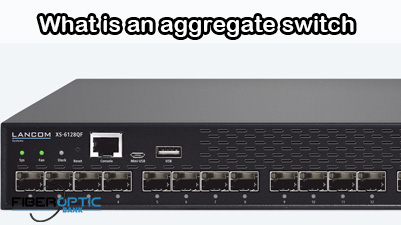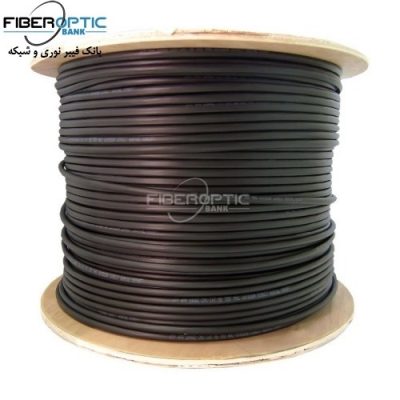aggregate switch
The three layers of a traditional three-layer network design are the core layer, aggregation layer, and access layer. Together, these layers can offer consumers a network that is safe, reliable, and affordable. As the physical part of the aggregation layer, aggregation switches typically play a crucial part in the overall network architecture. An aggregation switch is what? How does it work? Let’s examine it in detail.
What Is an Aggregation Switch?
An aggregation switch is a networking device that allows multiple network connections to be bundled together into a single link. This enables increased bandwidth and better network performance.
Typically, aggregation switches use link aggregation protocols, such as Link Aggregation Control Protocol (LACP) and Ethernet Aggregation to combine multiple links into a single, logical connection. Therefore, they can offer great flexibility and scalability, allowing for quick and easy network expansion or reconfiguration.
In most cases, aggregation switches are used in networks with high-traffic levels or large numbers of users, as they can efficiently distribute data across multiple links.
What Role Does the Aggregation Switch Play in the Network?
Installed in the middle of the network architecture, the aggregation switch is in charge of controlling the data sent from the lower layer (access layer switch), while also reporting data to the upper layer (core layer switch). This allows for the efficient flow of network traffic and helps to improve network performance.
After the aggregation switch receives data from the access switch, it performs local routing, filtering, traffic balancing, and QoS priority management. Then it will process the data for security mechanisms, IP address translation, and multicast management. Finally, according to the processing result, it will forward the data to the core layer switch or perform local routing to ensure the normal operation of the core layer.
Generally, aggregation switches outperform access switches in terms of performance and switching speed. They can provide an important layer of redundancy and scalability for the network, as well as route network traffic and enforce network security policies.
Is the Distribution Layer the Same as the Aggregation Layer?
The Distribution Layer and the Aggregation Layer are two distinct layers of network architecture.
The Distribution Layer is responsible for forwarding traffic from the core of the network to the access layer, while the Aggregation Layer gathers traffic from the access layer and forwards it to the core.
The two layers are connected by a Layer 2 link, allowing for direct communication between the two. The roles of the two layers are different, but they work together to provide a secure and efficient network architecture.
The three layers of a traditional three-layer network design are the core layer, aggregation layer, and access layer. Together, these layers can offer consumers a network that is safe, reliable, and affordable. As the physical part of the aggregation layer, aggregation switches typically play a crucial part in the overall network architecture. An aggregation switch is what? How does it work? Let’s examine it in detail.
What Is an Aggregation Switch?
An aggregation switch is a networking device that allows multiple network connections to be bundled together into a single link. This enables increased bandwidth and better network performance.
Typically, aggregation switches use link aggregation protocols, such as Link Aggregation Control Protocol (LACP) and Ethernet Aggregation to combine multiple links into a single, logical connection. Therefore, they can offer great flexibility and scalability, allowing for quick and easy network expansion or reconfiguration.
In most cases, aggregation switches are used in networks with high-traffic levels or large numbers of users, as they can efficiently distribute data across multiple links.
What Role Does the Aggregation Switch Play in the Network?
Installed in the middle of the network architecture, the aggregation switch is in charge of controlling the data sent from the lower layer (access layer switch), while also reporting data to the upper layer (core layer switch). This allows for the efficient flow of network traffic and helps to improve network performance.
After the aggregation switch receives data from the access switch, it performs local routing, filtering, traffic balancing, and QoS priority management. Then it will process the data for security mechanisms, IP address translation, and multicast management. Finally, according to the processing result, it will forward the data to the core layer switch or perform local routing to ensure the normal operation of the core layer.
Generally, aggregation switches outperform access switches in terms of performance and switching speed. They can provide an important layer of redundancy and scalability for the network, as well as route network traffic and enforce network security policies.
Is the Distribution Layer the Same as the Aggregation Layer?
The Distribution Layer and the Aggregation Layer are two distinct layers of network architecture.
The Distribution Layer is responsible for forwarding traffic from the core of the network to the access layer, while the Aggregation Layer gathers traffic from the access layer and forwards it to the core.
The two layers are connected by a Layer 2 link, allowing for direct communication between the two. The roles of the two layers are different, but they work together to provide a secure and efficient network architecture.
Source: community.fs
Related products...
fiber-optic-cable
fiber-optic-cable
fiber-optic-cable
















[ratings]